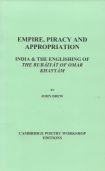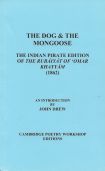LIST OF ILLUSTRATIONS xiii
INTRODUCTION 1
PROLOGUE 20
The Imagined Elites of the Omar Khayyám Club
CHAPTER ONE 35
In (and Out of) Omar’s Garden: Illustrating the Rubáiyát
Out of the Garden: Taking Omar on Holiday
In an Oriental Garden
The Symbolic Garden
CHAPTER TWO 81
Rubáiyát Parodies and Modern Life: The Omar Cure-all
Defining the Rubáiyát Parody
Nationalism, Fraternity, and the British Rubáiyát Parody
The Other Among Us: Views of Dominance and Compassion
Risky Business and Deviant Behavior: Control and Resistance in the Realm of Leisure
Courtship: Changing Rituals for Modern Life
CHAPTER THREE 133
Consumerism and the Rubáiyát
Too Much and Never Enough: Rubáiyát Mania
Production and Consumption in the Modern Middle Class
CHAPTER FOUR 161
Omar Sells: Advertisements Based on the Rubáiyát
Parody-Advertisements
Advertising Schemes
CHAPTER FIVE 185
The Rubáiyát as Doctrine, or “What Would Omar Do?”
Religious Climate
The Rubáiyát as Doctrine: Problems of Interpretation
In Search of Omar Khayyám
Khayyám’s Skepticism and the Lure of Modern Science
The Question of Immortality
The Triumph of Free Will over Fate
CONCLUSION 223
APPENDIX 228
Edward FitzGerald’s Rubáiyát of Omar Khayyam, first and fifth editions
ILLUSTRATIONS 239
BIBLIOGRAPHY 317
CURRICULUM VITAE


